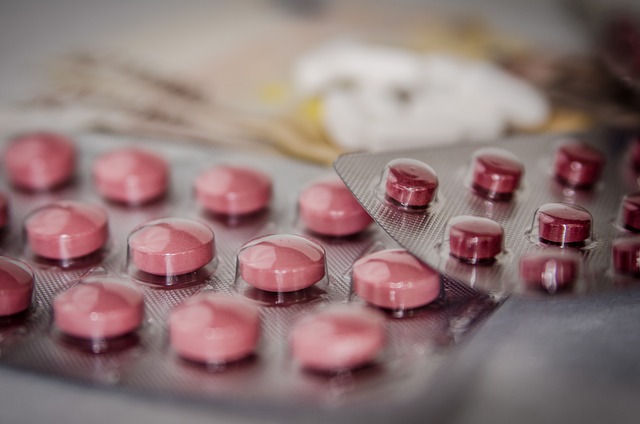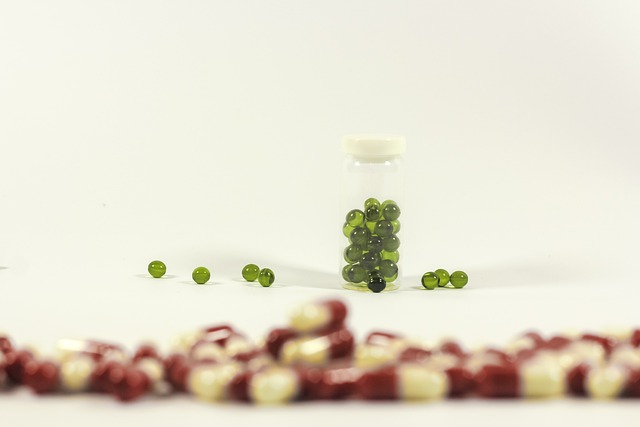GLP-1 receptor agonists (GLP-1 drugs) are innovative medications for type 2 diabetes management, mimicking natural hormones to regulate blood glucose levels. Key players like exenatide, liraglutide, and semaglutide offer unique benefits, with semaglutide leading in duration of action. While generally safe, these drugs may cause gastrointestinal side effects; regular monitoring is advised for serious complications. Selection depends on individual health, lifestyle, and treatment goals, with future developments aiming for personalized, more convenient GLP-1 therapies.
“Exploring the world of GLP-1 receptor agonists, this comprehensive guide delves into their pivotal role in diabetes management. As an innovative class of medications, GLP-1 drugs have revolutionized treatment approaches, offering both injected and oral options. We compare top contenders like Exenatide, Liraglutide, and Semaglutide, analyzing their efficacy, side effects, and patient considerations. Uncover the latest trends and future prospects shaping the landscape of GLP-1 receptor agonist therapy in this insightful exploration of modern diabetes care.”
Understanding GLP-1 Receptor Agonists: Their Role in Diabetes Management

GLP-1 receptor agonists, also known as GLP-1 drugs, are a class of medications designed to mimic the effects of the natural hormone glucagon-like peptide-1 (GLP-1). These drugs play a significant role in diabetes management, particularly for individuals with type 2 diabetes. By activating GLP-1 receptors in the body, these agonists stimulate insulin secretion and suppress glucagon release, leading to improved blood sugar control.
This dual action helps lower blood glucose levels while also promoting weight loss. GLP-1 drugs are considered a game-changer in diabetes treatment due to their ability to provide better glycemic control compared to some traditional medications. They are often prescribed as an oral or injectable form, offering flexibility in administration and the potential for improved patient adherence.
Key Difference: Injected vs Oral GLP-1 Drugs

One key difference between various GLP-1 receptor agonists lies in their administration method, which can be either injected or oral. Injected GLP-1 drugs, like exenatide and liraglutide, are typically delivered via subcutaneous injections under the skin, offering a consistent and precise dose. This method bypasses gastrointestinal digestion, enabling faster onset of action and more predictable blood levels. Oral GLP-1 agonists, such as semaglutide and lixisenatide, on the other hand, are metabolized by enzymes in the gut, resulting in slower absorption and potentially lower peak concentrations. They’re usually taken once daily, making them more convenient but with a longer time to reach therapeutic effect.
Oral administration also allows for flexibility in dosing schedules compared to injections, which often require regular, scheduled times. However, injected GLP-1 drugs may carry a higher risk of injection site reactions and the need for rotation between injection sites, while oral options might have fewer side effects related to injection but could potentially cause gastrointestinal issues like nausea or diarrhea as part of their metabolism.
Exploring Popular GLP-1 Medications: Exenatide, Liraglutide, and Semaglutide

In the realm of GLP-1 drugs, three prominent agonists have emerged as game changers in diabetes management: Exenatide, Liraglutide, and Semaglutide. Each offers unique advantages, catering to diverse patient needs. Exenatide, for instance, mimics a natural hormone found in stomachs after eating, enhancing insulin secretion and lowering blood glucose levels. Its once-weekly administration makes it convenient for patients.
Liraglutide stands out with its long-lasting effects, providing substantial weight loss benefits in addition to glycemic control. Semaglutide, the latest entry, boasts an even longer duration of action and demonstrates remarkable efficacy across various patient populations. These GLP-1 medications represent a significant advancement in diabetes treatment, offering improved quality of life and reduced risks associated with traditional insulin therapies.
Efficacy and Side Effects: A Comparative Analysis

GLP-1 receptor agonists are a class of drugs used to treat type 2 diabetes, offering a more natural approach compared to insulin therapy. When comparing different GLP-1 drugs, efficacy and side effects are key considerations. These medications work by mimicking the effects of the hormone glucagon-like peptide-1 (GLP-1), which stimulates insulin production and suppresses glucagon release in response to food intake.
In terms of efficacy, all GLP-1 drugs have proven effective at reducing blood sugar levels. However, specific drugs may differ in their ability to lower HbA1c (a measure of long-term blood sugar control) and weight management. For instance, some agonists like Semaglutide and Liraglutide have demonstrated superior weight loss effects compared to others. As for side effects, GLP-1 drugs generally have a good safety profile. Common adverse reactions include nausea, vomiting, diarrhea, and abdominal pain, but these tend to be mild and often resolve with time or dosage adjustment. More serious side effects are rare but can include pancreatitis and kidney problems, emphasizing the importance of regular medical monitoring during treatment.
Patient Considerations for Choosing the Right GLP-1 Drug

When selecting a GLP-1 drug, patients and healthcare providers should consider several factors to ensure optimal efficacy and patient adherence. The choice of medication depends on individual health profiles, lifestyle, and treatment goals. For instance, some GLP-1 drugs may be more suitable for those with type 2 diabetes who require weight management support, while others could benefit patients focusing on blood glucose control alone.
Patient comfort and side effect profiles differ among these medications. Those considering bariatric surgery might prefer certain agents due to their appetite-reducing properties, whereas individuals concerned about nausea or injection site reactions may opt for alternative GLP-1 drugs known for their milder adverse effects. Regular communication with healthcare teams is vital to make informed decisions, tailor treatments, and address any concerns regarding these powerful diabetes management tools, collectively known as GLP-1 drugs.
Future Prospects and Emerging Trends in GLP-1 Receptor Agonist Therapy

The future of GLP-1 receptor agonist therapy looks promising, with continuous advancements in drug development. Researchers are exploring more targeted and personalized treatments, aiming to optimize efficacy and minimize side effects. One emerging trend is the design of next-generation GLP-1 drugs with enhanced potency and extended duration of action, potentially offering once-daily or even less frequent dosing regimens. These innovations could significantly improve patient compliance and adherence to treatment.
Additionally, there is a growing interest in combinational therapies involving GLP-1 agonists with other metabolic agents, targeting multiple pathways simultaneously to achieve better glycemic control and weight management. As our understanding of GLP-1 receptor biology deepens, we can expect to see more precise and tailored interventions, catering to individual patient needs and preferences.
